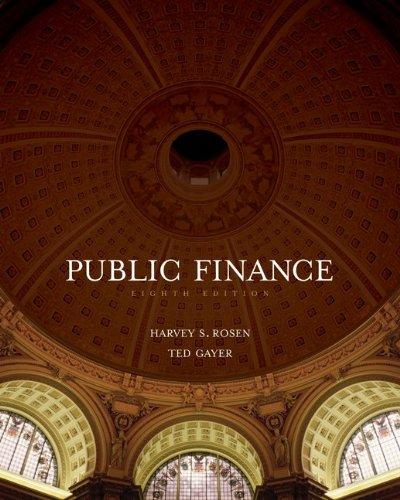Question
Megan Easton is a portfolio manager with Dynamo Investment Partners (Dynamo) and manages a bond portfolio that invests primarily in investment- grade corporate bonds with
Megan Easton is a portfolio manager with Dynamo Investment Partners (Dynamo) and manages a bond portfolio that invests primarily in investment- grade corporate bonds with a limited amount of US government bonds. Easton meets with John Avelyn, a newly hired analyst, to discuss the structure and management of this investment portfolio, as well as some possible changes to the portfolio composition. Easton begins the meeting by stating her belief that the credit spread is the single most important measure that investors use when selecting bonds. Among the various credit spread measures, including the G- spread, I- spread, and Z- spread, Easton prefers the G- spread. Easton and Avelyn next discuss credit strategy approaches. Dynamo uses a bottom- up approach that selects bonds with the best relative value from the universe of bonds with similar characteristics. Avelyn comments on the following considerations in a bottom- up approach. Comment 1 Callable debt has a smaller option- adjusted spread than comparable non- callable debt. Comment 2 Benchmark corporate bond issues normally have wider spreads than older bonds of the same issuer. Comment 3 The announcement of a new corporate bond issue often leads to an increase in the credit spread on the existing bonds. Dynamo is changing the bond portfolios investment constraints so that it can invest up to 20% of the assets in high- yield corporate bonds and 20% in structured financial instruments. Easton makes the following statement about these changes: Liquidity and trading issues for high- yield bonds, such as investment- grade bonds, will be a key consideration in our security selection. Although both high- yield and investment- grade bonds are quoted as spreads over benchmark government bonds, we must be aware that dealers are likely to hold larger inventories of high- yield bonds and their bidoffer spreads will be larger. Avelyn makes the following statements about the differences between investmentgrade and high- yield bonds. Statement 1 When default losses are low and credit spreads are relatively tight, high- yield bonds tend to perform more like investment grade bonds. Statement 2 Investment- grade bonds have greater exposure to credit risk than high- yield bonds. Statement 3 High- yield bonds have more exposure to interest rate risk than investment- grade bonds. Two of the structured financial instruments that Easton and Avelyn are considering for Dynamos portfolio are collateralized debt obligations (CDOs) and covered bonds. Easton and Avelyn make the following comments about the securities. Easton: If the correlation of the expected defaults on the CDO collateral of the senior and subordinated tranches is positive, the relative value of the mezzanine tranche compared with the senior and equity tranches will increase. Avelyn: Replacing a portion of the corporate bonds with CDOs will provide meaningful diversification to the investment portfolio. Avelyn: Investing in covered bonds will give us the yield increase we are seeking compared with investing in corporate bonds or asset- backed securities.
5. Which of Avelyns statements about the differences between investment- grade and high- yield bonds is accurate?
A. Statement 2
B. Statement 3
C. Statement 1
6. Which comment regarding CDOs and covered bonds is accurate?
A. Easton's comment
B. Avelyn's second comment
C. Avelyn's first comment
7. One of your high- yield bond holdings is a 10- year bond issued by EKN Corporation
(EKN). The bond has a price of 91.82, a modified duration of 8.47, and a spread duration
of 8.47. For this bond, you speculate on the effects of an interest rate increase
of 20 bps and, because of a change in its credit risk, an increase in the EKN bonds
credit spread of 20 bps. You suggest that because the modified duration and credit
spread duration of the EKN bond are equal, the bonds price will not change (all else
being equal) in response to the interest rate and credit spread changes.
Is your prediction correct that the EKN bond price will not change in response
to the interest rate and credit spread changes, all else being equal?
A. No the bond price should decrease by 1.69%
B. Yes
C. No the bond price should decrease by 3.39%
8. Petit observes that credit spread levels for bonds are currently higher than normal,
and she recommends that the firm increase its investment in high- yield bonds. She
mentions three reasons for increasing high- yield bond exposure.
Reason 1: The portfolios liquidity will improve.
Reason 2: Defaults on high- yield bonds will be relatively low.
Reason 3: The firms view is that economic growth will be greater than the consensus
forecast.
Which reason best supports Petits recommendation to increase the firms investment in high- yield bonds?
A. Reason 2
B. Reason 3
C. Reason 1
Step by Step Solution
There are 3 Steps involved in it
Step: 1

Get Instant Access to Expert-Tailored Solutions
See step-by-step solutions with expert insights and AI powered tools for academic success
Step: 2

Step: 3

Ace Your Homework with AI
Get the answers you need in no time with our AI-driven, step-by-step assistance
Get Started


